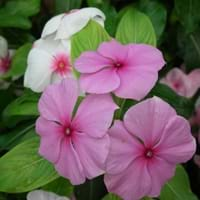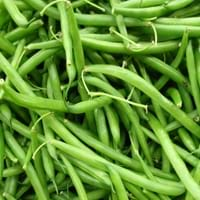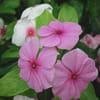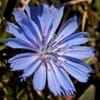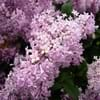Life Span
Perennial
Annual
Type
Flowering Plants, Shrubs
Vegetable
Origin
Madagascar
Central America, South America
Types
Purple vinca, Vinca, cherry red, strawberry color
Golden Wax Bean, Romano bean
Habitat
Subtropical climates, Tropical regions
Fields, orchards
USDA Hardiness Zone
4-9
Not Available
AHS Heat Zone
12-1
Not Available
Sunset Zone
A1, A2, A3, H1, H2, 1a, 1b, 2a, 2b, 3a, 3b, 4, 5, 6, 7, 8, 9, 10, 11, 12, 13, 14, 15, 16, 17, 18, 19, 20, 21, 22, 23, 24
A1, A2, A3, H1, H2, 1a, 1b, 2a, 2b, 3a, 3b, 4, 5, 6, 7, 8, 9, 10, 11, 12, 13, 14, 15, 16, 17, 18, 19, 20, 21, 22, 23, 24
Habit
Clump-Forming
Vining/Climbing
Flower Color
Magenta, Pink, Rose
White, Pink, Lavender
Flower Color Modifier
Not Available
Bicolor
Fruit Color
Not Available
White, Green, Dark Red, Tan, Black
Leaf Color in Spring
Dark Green
Green, Purple, Dark Green
Leaf Color in Summer
Dark Green
Green, Dark Green
Leaf Color in Fall
Dark Green
Green, Dark Green
Leaf Color in Winter
Dark Green
Not Available
Leaf Shape
Oval
Maple shaped
Plant Season
Fall, Spring, Summer, Winter
Spring, Summer, Fall
Sunlight
Partial shade
Full Sun
Type of Soil
Loamy, Sandy, Well drained
Loam, Sand
The pH of Soil
Neutral, Slightly Alkaline
Neutral, Alkaline
Soil Drainage
Well drained
Well drained
Bloom Time
Fall, Spring, Summer
Indeterminate
Tolerances
Drought, Pollution, Salt
Drought
Where to Plant?
Container, Ground, Pot
Container, Ground
How to Plant?
Seedlings, Stem Planting, Transplanting
Seedlings
Plant Maintenance
Medium
Medium
Watering Requirements
Does not require lot of watering, Medium
Do not let dry out between waterings, Use Mulches to help prevent water loss during hot and windy weather
In Summer
Lots of watering
Lots of watering
In Spring
Moderate
Moderate
In Winter
Average Water
Average Water
Soil pH
Neutral, Slightly Alkaline
Neutral, Alkaline
Soil Type
Loamy, Sandy, Well drained
Loam, Sand
Soil Drainage Capacity
Well drained
Well drained
Sun Exposure
Partial shade
Full Sun
Pruning
Prune ocassionally
Remove damaged leaves, Remove dead branches, Remove dead leaves
Fertilizers
All-Purpose Liquid Fertilizer
All-Purpose Liquid Fertilizer
Pests and Diseases
Botrytis Blight, Canker, Crown rot, Pythium rot, Root rot
Free of serious pests and diseases
Plant Tolerance
Drought
Drought
Flower Petal Number
Single
Single
Foliage Texture
Medium
Coarse
Foliage Sheen
Glossy
Matte
Attracts
Butterflies
Aphids, Birds, Butterflies, Caterpillar
Allergy
Intestinal gas, Nausea, Vomiting
Diarrhea, Irritation to stomach
Aesthetic Uses
Beautification, Showy Purposes
Not Used For Aesthetic Purpose
Beauty Benefits
Not Available
Making cosmetics, Remove blemishes
Environmental Uses
Air purification
Food for animals, No fertilizer, pesticides, or herbicides needed
Medicinal Uses
Chest pain, High blood pressure, Inflammation, Sore throat, Tooth ache, Wounds
Acne, Diuretic, Emmoiliant, Menstrual Disorders
Part of Plant Used
Whole plant
Fruits
Other Uses
Decoration Purposes, Showy Purposes, Used as Ornamental plant
Animal Feed, Used as a nutritious food item
Used As Indoor Plant
Yes
Yes
Used As Outdoor Plant
Yes
Yes
Garden Design
Bedding Plant, Container, Edging
Edible, Herb, Vegetable, Vine
Botanical Name
Catharanthus roseus
PHASEOLUS vulgaris
Common Name
Madagascar periwinkle or rosy periwinkle
Green Beans
In Hindi
Periwinkle
फलियां
In German
Immergrün
Bohnen
In French
Pervenche
haricots
In Spanish
Bígaro
Green Beans
In Portuguese
Mirta
feijões
In Polish
Barwinek
fasola
In Latin
Periwinkle
fabam
Phylum
Mollusca
Spermatophyta
Class
Gastropoda
Magnoliopsida
Family
Apocynaceae
Fabaceae
Genus
Catharanthus
Phaseolus
Clade
Not Available
Dicotyledonous
Tribe
Not Available
Not Available
Subfamily
Not Available
Not Available
Season and Care of Periwinkle and Spring Beans
Season and care of Periwinkle and Spring Beans is important to know. While considering everything about Periwinkle and Spring Beans Care, growing season is an essential factor. Periwinkle season is Fall, Spring, Summer and Winter and Spring Beans season is Fall, Spring, Summer and Winter. The type of soil for Periwinkle is Loamy, Sandy, Well drained and for Spring Beans is Loam, Sand while the PH of soil for Periwinkle is Neutral, Slightly Alkaline and for Spring Beans is Neutral, Alkaline.
Periwinkle and Spring Beans Physical Information
Periwinkle and Spring Beans physical information is very important for comparison. Periwinkle height is 1.97 cm and width 2.96 cm whereas Spring Beans height is 30.00 cm and width 30.00 cm. The color specification of Periwinkle and Spring Beans are as follows:
Periwinkle flower color: Magenta, Pink and Rose
Periwinkle leaf color: Dark Green
Spring Beans flower color: White, Pink and Lavender
- Spring Beans leaf color: Green, Purple and Dark Green
Care of Periwinkle and Spring Beans
Care of Periwinkle and Spring Beans include pruning, fertilizers, watering etc. Periwinkle pruning is done Prune ocassionally and Spring Beans pruning is done Remove damaged leaves, Remove dead branches and Remove dead leaves. In summer Periwinkle needs Lots of watering and in winter, it needs Average Water. Whereas, in summer Spring Beans needs Lots of watering and in winter, it needs Average Water.
